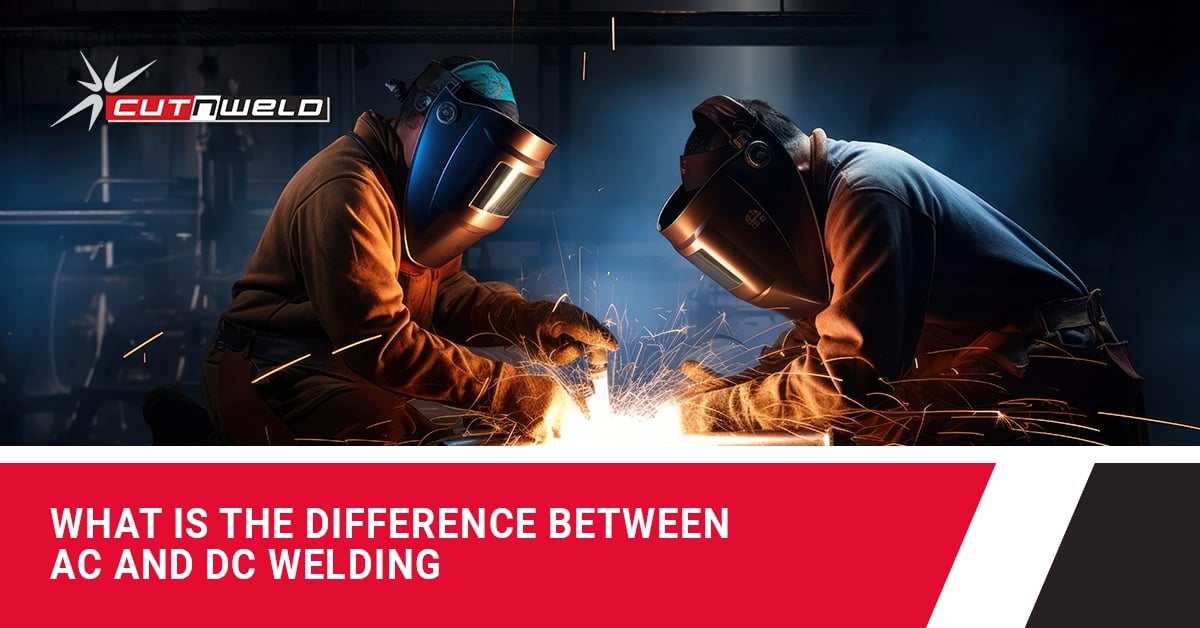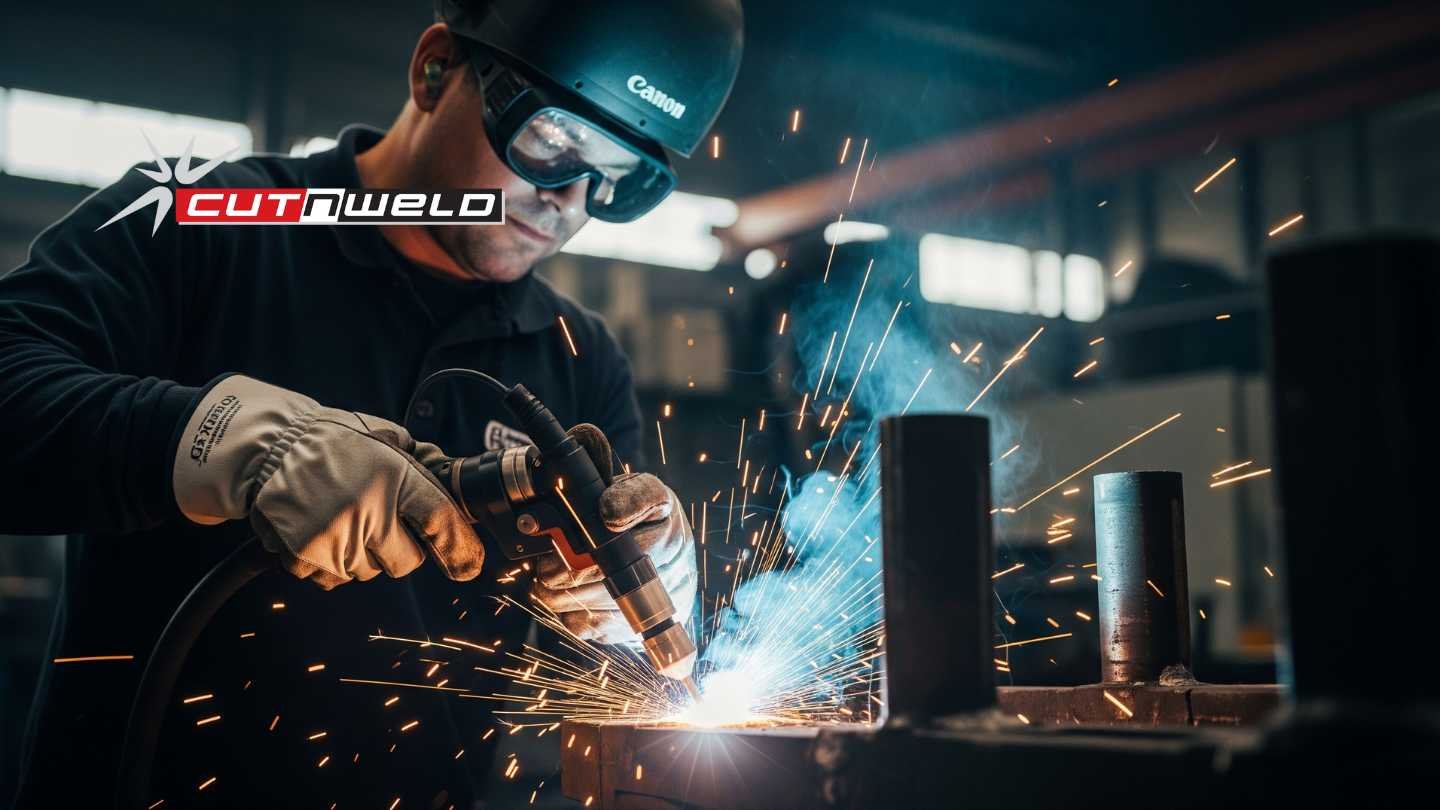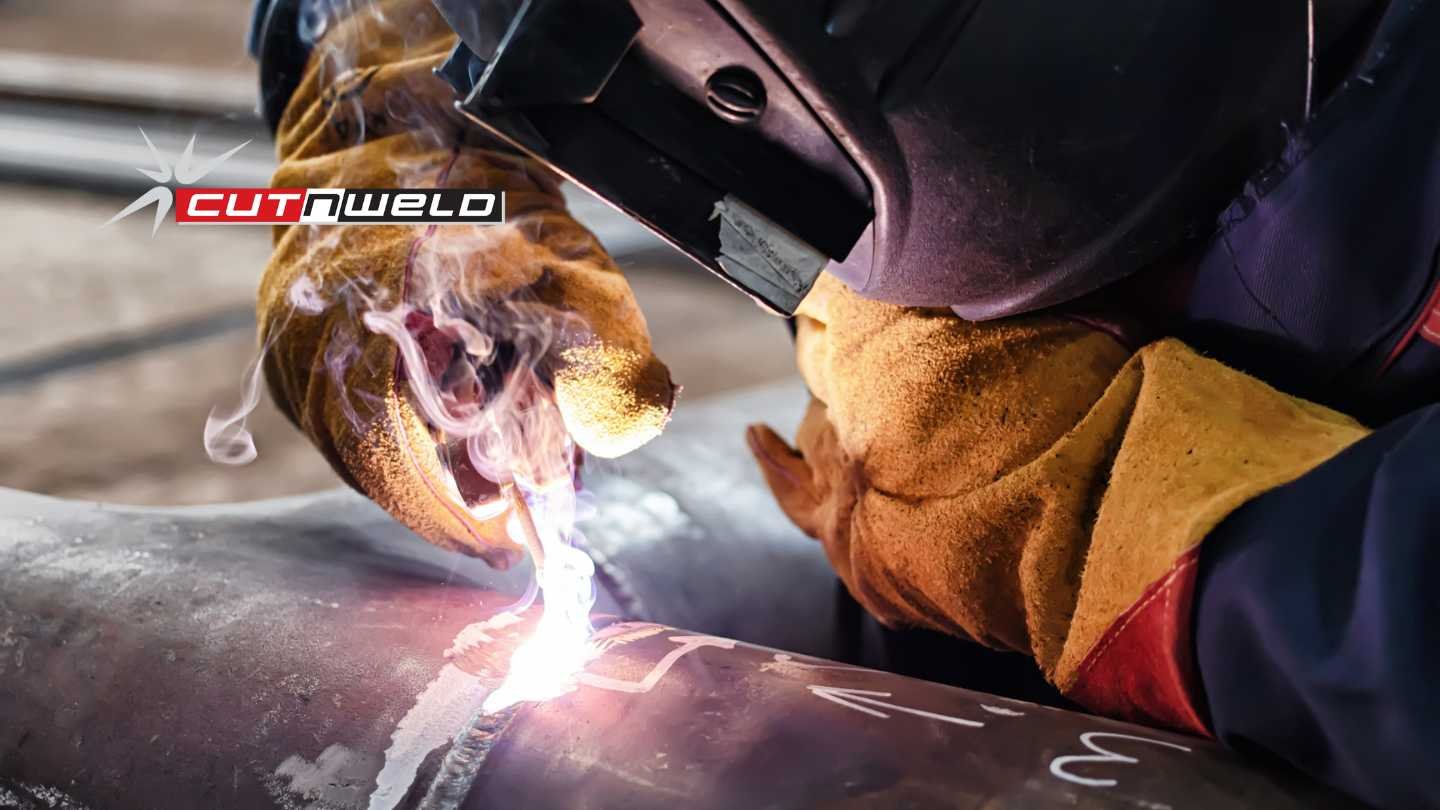This difference in current type has a number of implications for the welding process. For example, DC welding produces a more stable arc than AC welding, making it easier to control. DC welding also produces less spatter, a common problem with AC welding.
Another difference between DC welding and AC welding is the type of electrodes that can be used. AC welding requires coated electrodes, while DC welding can use any electrode type.
Here is a table that summarises the key differences between DC welding and AC welding:
Characteristic | DC Welding | AC Welding |
Filler metal deposition rate | High | Moderate |
Arc stability | More stable | Less stable |
Spatter | Less spatter | More spatter |
Electrode type | Most Coated Electrodes | Most coated electrodes, except Aluminium Coated Electrodes and 6010 Pipe Electrodes. |
Penetration | Deeper penetration | Less penetration |
Equipment Cost | Tig welding machine cost is lower. Stick welding machine cost is medium to high. | TIG welding machine cost is higher. Stick welding machine cost is lower. |
Materials | Can only weld Aluminium with a suitable Aluminium Electrode. Restricted to Mild Steel and Stainless Steel DC TIG. | Can weld most materials, with the suitable electrode. Can weld Aluminium with an AC TIG Machine with High Frequency. |
Voltage drop using long leads | Yes | No |
DC welding
DC welding is well-suited for welding a variety of metals, including steel, aluminium, and stainless steel. It is often used for welding thin metals, as it provides more precise control over the weld puddle. DC welding is also used for welding thick metals, such as structural steel, where deep weld penetration is required.
One of the key features of DC welding is its versatility. It can be used for various materials, from carbon steel to stainless steel to aluminium. This makes it an ideal choice for welders who work with different materials and need a welding process that can handle various situations.
There are a few key components regarding the equipment needed for DC welding. The power source is the most important piece of equipment, as it provides the current needed to create the arc. Many types of DC welding power sources are available, ranging from basic transformer-based machines to more advanced inverter-based machines.
The electrode is another important component of DC welding. The type of electrode used will depend on the material being welded and the welding process being used. For example, a consumable electrode is used in SMAW (Shielded Metal Arc Welding), while in TIG (Tungsten Inert Gas) welding, a non-consumable tungsten electrode is used.
Other components that may be used in DC welding include shielding gas, which protects the weld from contaminants in the air, and welding wire, which is used in MIG (Metal Inert Gas) welding to feed the electrode to the weld.
When it comes to safety in DC welding, there are a few key precautions that welders must take. First and foremost, welders must protect their eyes and skin from the intense light and heat generated by the welding process. This is typically done with a welding helmet and protective clothing.
Additionally, welders must be aware of the fumes and gases generated by the welding process. If inhaled, these can be hazardous to the welder’s health, so it is important to ensure adequate ventilation in the welding area.
There are two types of DC welding: DCEN and DCEP.
- DCEN, which stands for Direct Current Electrode Negative, is used for welding ferrous metals such as carbon steel. In this type of welding, the electrode is connected to the negative terminal of the power source, while the workpiece is connected to the positive terminal. This produces a deep, narrow penetration ideal for welding thick materials.
- DCEP, which stands for Direct Current Electrode Positive, welds non-ferrous metals such as aluminium. In this type of welding, the electrode is connected to the positive terminal of the power source, while the workpiece is connected to the negative terminal. This produces a wide, shallow penetration ideal for welding thin materials.
AC welding
AC welding, or alternating current welding, is an arc welding that uses alternating current to create an electric arc between an electrode and the workpiece. The alternating current reverses polarity many times per second, which helps to break up the oxide layer on the surface of the metal and improve the weld penetration.
AC welding is most commonly used for welding aluminium and magnesium alloys. It can also be used for welding certain types of steel, such as dirty or rusty steel. AC welding is less precise than DC welding but can be faster and more productive.
There are two main types of AC welding:
- Stick welding: Stick welding is a manual process using a consumable electrode rod. The rod is held in a holder and struck against the workpiece to create an arc. The rod melts and deposits filler metal into the weld pool.
- TIG welding: TIG welding, or tungsten inert gas welding, is a semi-automatic welding process that uses a non-consumable tungsten electrode and a filler metal rod. The rod is fed into the weld pool manually.
AC welding is a versatile welding process that can be used for a variety of applications. It is a good choice for welding aluminium and magnesium alloys and certain types of steel.
AC Welding or DC Welding? Which type of welding is better?
So, which type of welding is better? It depends on your specific needs. If you are looking for the highest quality welds and the most versatility, then DC welding is the better choice. If you are welding aluminium alloys or dirty or rusty steel, or if you need to be able to weld quickly and productively, then AC welding may be a better option.
If you are unsure which type of welding is right for you, it is best to consult with a qualified welder.
Cut-N-Weld’s offering
Cut-N-Weld imports a broad range of high-quality welding and cutting products.
Our eCommerce platform makes it easy to find the products you’re looking for and convenient to reorder based on your past purchases.
Contact Cut-N-Weld to get expert advice or purchase directly on our e-commerce platform.






